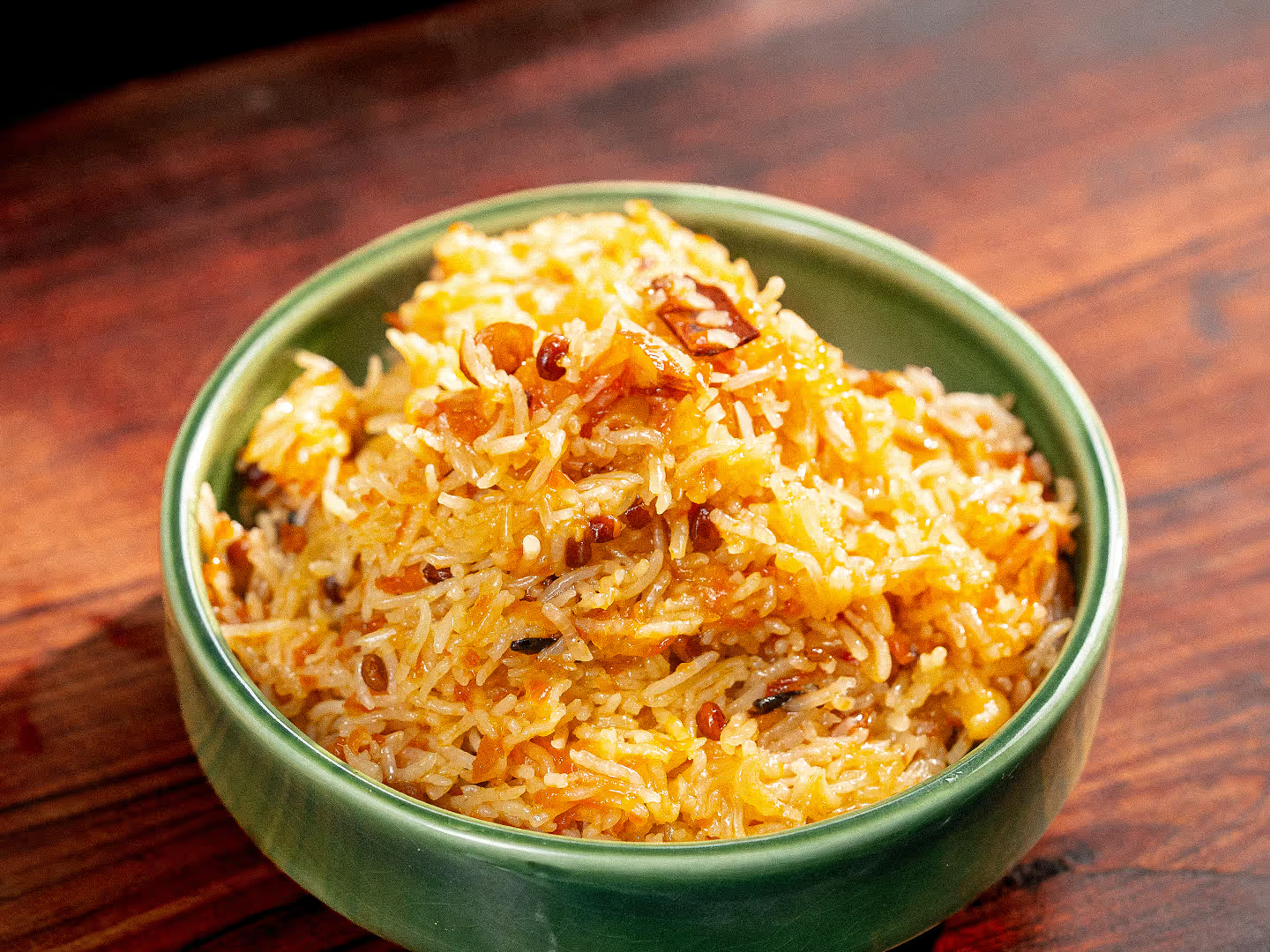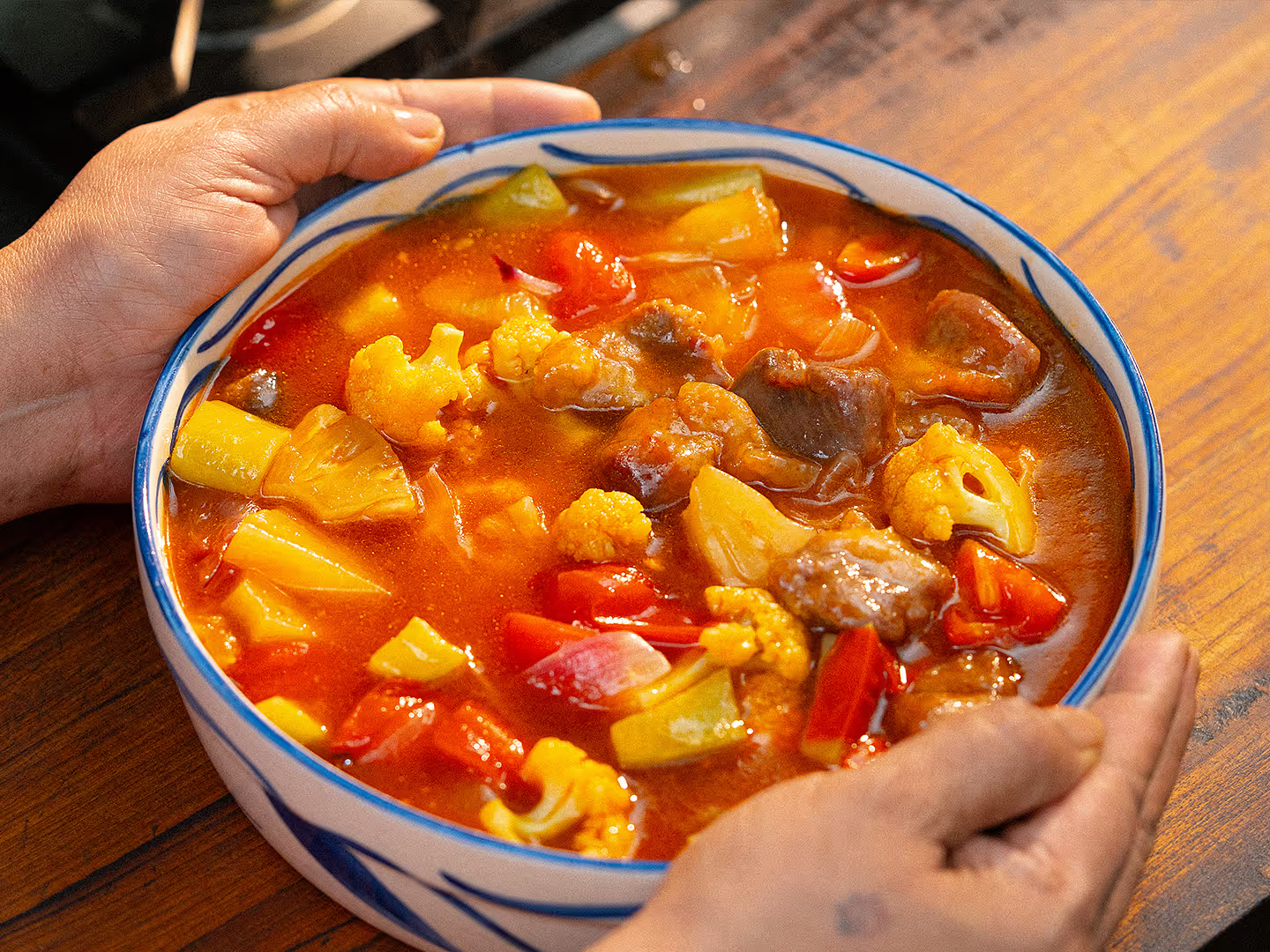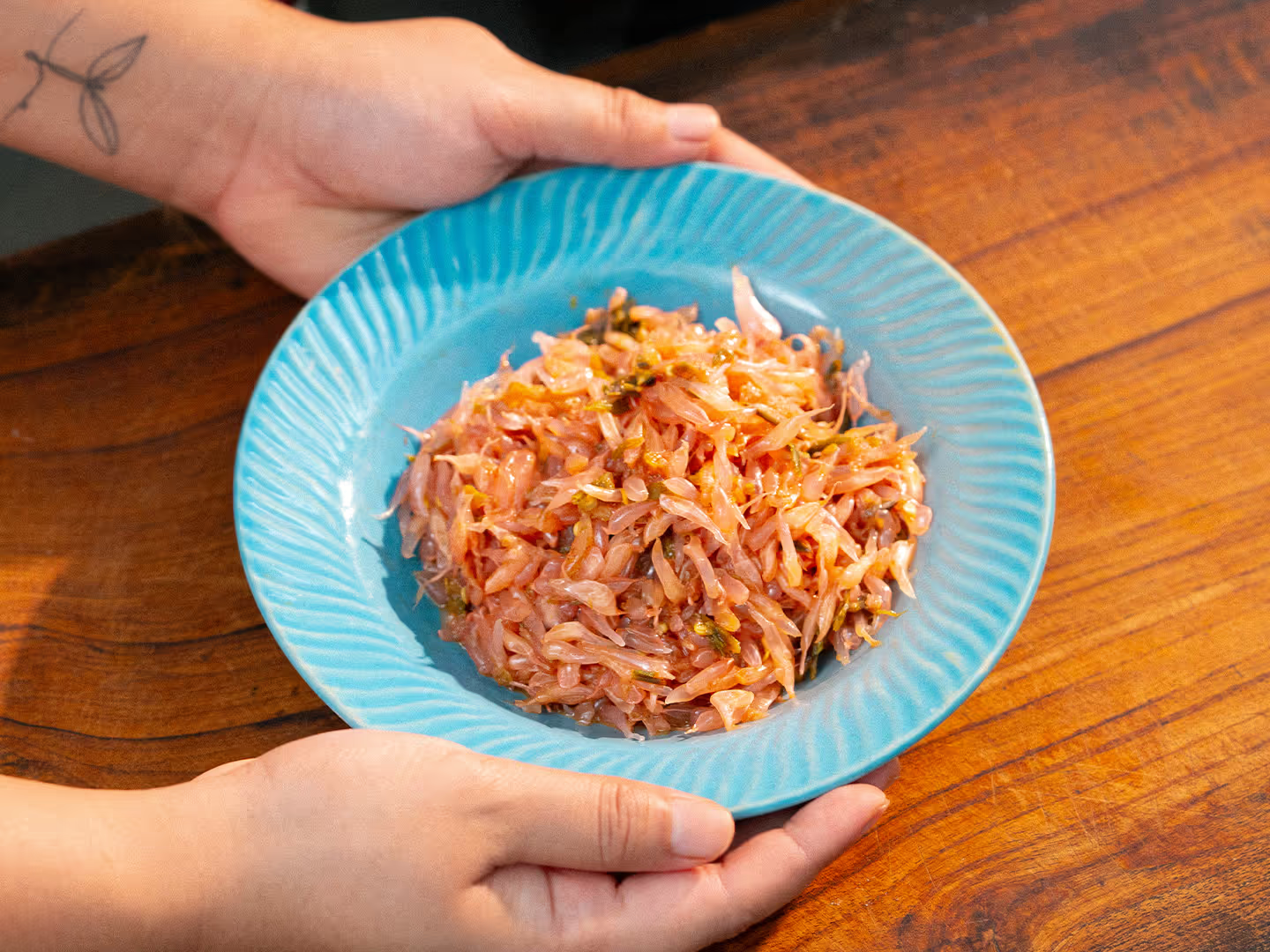Phuchka
A step-by-step guide to make phuchka/pani puri/gol gappa papri, spicy potatoes and tamarind water at home!
- Cooking time3 hours
- Calorieskcal
[In this series, we tip our hats to some of our favourite dishes available in the restaurants, cafés, and cabins of Calcutta. Our purpose in doing so is to document their existence, and give people a way to recreate them if they happen to live away from the city. Make these at home, or hunt them down from the source—irrespective of how you get your hands on these items, we hope you enjoy them.]
Phuchka is a way of life in Calcutta. Everyone has their favourite phuchkawala (phuchka seller). Every para (neighbourhood) must have at least a few phuchkawalas who set up their stalls around four in the afternoon everyday. They bring their already fried phuchka papri or puris in huge bags and arrange them neatly in a huge wicker basket or a glass box. Then they start preparing their mis en place and mixing the tawk jol (sour water). By the time they are done, customers start gathering around them and the day’s business starts.
What is Papad Khar?
Papad Khar (or Saji khar) is an alkaline salt made up of Sodium Carbonate (Na2CO3) and Sodium Bicarbonate(NaHCO3). The baking powder along with the Papad Khar help expand the papri when they are fried.
Sodium Bicarbonate is commonly sold as baking or cooking soda in grocery stores. Sodium carbonate is known as soda ash. You should be able to find Papad Khar in any big local grocery store in Calcutta.
Frequently Asked Questions
Books in this recipe
Ingredients
For the papri
- 200 g atta
- 100 g sooji (semolina)
- ¼ tsp papad khar
- ¼ tsp baking powder
- 170 ml water
- vegetable oil for deep frying
For the tamarind water
- 30 g lime juice
- 25 g tamarind pulp
- ¼ tsp bhaja moshla
- 3 g black salt (beetnoon)
- 3 g salt
- 400 ml drinking water
For the potato filling
- 300 g boiled potatoes
- 4 g salt
- 4 g bhaja moshla
- 1 tsp chaat masala
- ½ tsp coriander powder
- 7 g crushed green chillies
- 10 g coriander leaves
- 50 g of phuchka water
- 30 g boiled motor
- 10 g soaked chhola
- chopped onions (optional)
Method
Make the papri
- In a large bowl mix together atta, sooji, papad khar, and baking powder. Add water and start kneading it into a stiff dough. Wrap in a plastic wrap or place in an airtight bowl to rest it for one hour.
- After an hour divide the dough small portions (7 g each if you like large papri, and 5 g if you want a small ones).
- Roll each tiny ball of dough between your palms until they are round and have a smooth outer surface. Roll them out one by one into discs of uniform thickness—about 7 centimetre in diameter when using a 7 gram portion of dough.
- As you roll the papris, leave them out to dry for some time. In a cool room without a fan running it takes up to two hours. But don't go by time. The surface of the papris should dry out but they should not turn stiff. Flip them when one side looks dry.
- Now, heat oil in a korai or wok for deep frying. The oil has to be very hot—above 200ºC.
- Add a papri and press down with a jhajhri or perforated spoon. Within a few seconds it should puff and rise to the surface. Continue to fry it, basting it with hot oil or turning it over until it is brown. Take it out of the oil and place on a jhuri or colander so that the steam can escape and the papris remain crisp.
- The papris won't be very crispy right off the oil. Phuchka makers usually leave them out in the hot sun to dry and crisp up. During monsoons they use a high power incadescent light bulb to dry them. You can fry them in the evening and dry them in the sun next morning. As an alternative, dry them in an oven at the lowest temperature setting until crisp. Please keep an eye on them as. Papris burn easily! Also, if making ahead, crisp the papris on the day you are planning to serve them.
Make the tamarind water
- Soak tamarind in warm water mash it well to extract the pulp.
- Add lime juice or a mix of lime and gondoharaj lime juice, black salt, regular table salt, bhaja moshla and drinking water. You can also add some chopped coriander leaves if you want.
- Taste the water and adjust sourness and salt to your liking. You can leave the lime peels in the water for flavour.
Make the potato filling
- Peel and roughly mash boiled potatoes.
- Season them with salt, bhaja moshla, chaat masala, coriander powder, crushed green chillies, coriander leaves, and 50 ml of the tamaring water we just prepared.
- Mix everything together. Taste for seasoning and adjust it to your taste. Finally add boiled yellow peas (motor) and soaked Bengal gram. Mix gently and you are ready to serve phuchkas.
How can I make papad khar at home?
If you cannot find papad khar in a grocery store near you, it is easy to make at home. To make a substitute for papad khar, you need to start with baking soda (sodium bicarbonate). Papad khar is a mixture of sodium carbonate and sodium bicarbonate in a 2:1 ratio by weight.
Step 1: Make Sodium Carbonate
You can make sodium carbonate by simply heating sodium bicarbonate either in an oven or in a pot. When heated sodium bicarbonate releases water (vapour) and carbondioxide to turn into more alkaline sodium carbonate. You will notice that the white baking soda will start bubbling—indicating that the water vapour and carbondioxide gas are escaping out of the pan. Once it stops bubbling, it is done.
2 NaHCO₃ => Na₂CO₃ + H₂O + CO₂
Step 2: Mix
Using a weighing scale mix Sodium carbonate and bicarbonate in 2:1 ratio by weight. Now you have Papad khar. Keep it in a jar and put a label on it so that you don't confuse it with baking soda.





























